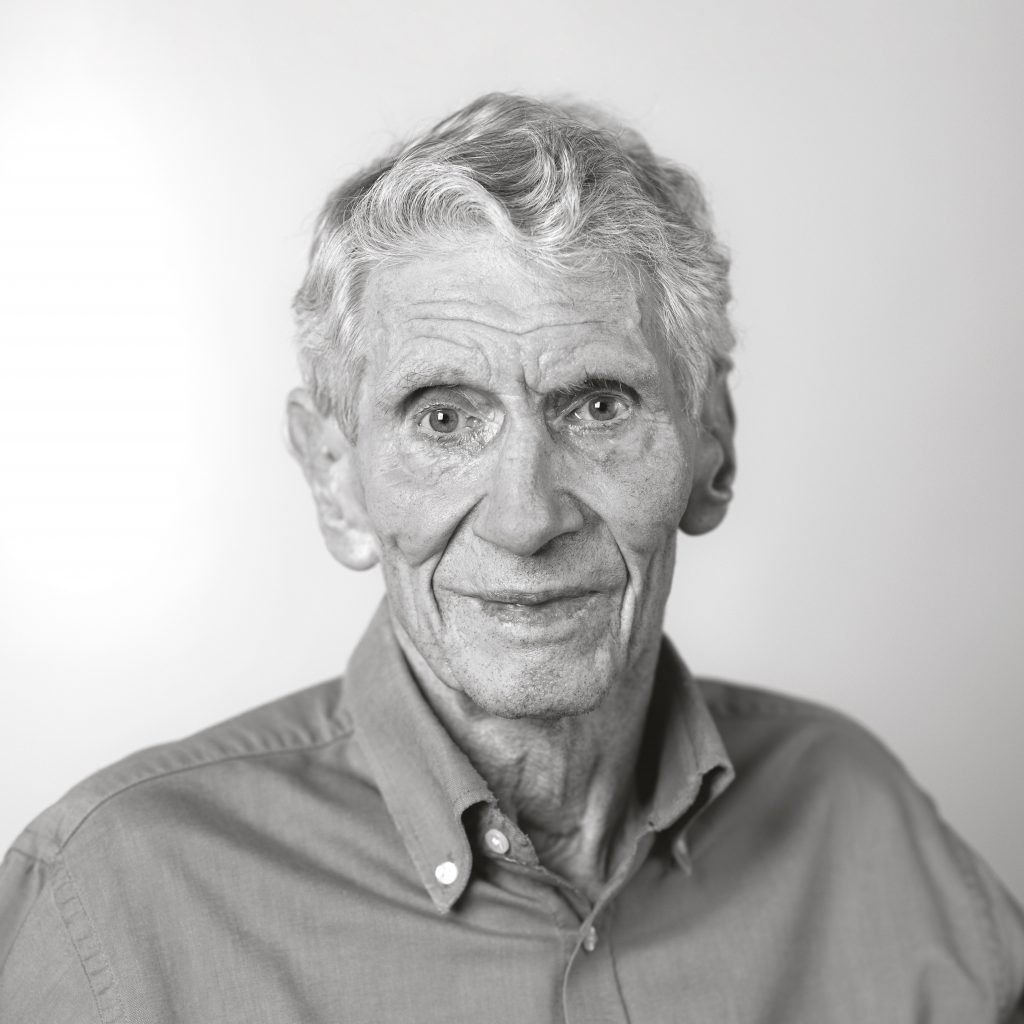Ken Holmes, former Head of EMBL Hamburg, died on 2 November at the age of 86.
It is with sadness that we share the news of the passing of Ken Holmes, a towering and much-loved figure within the EMBL and wider life sciences communities.
Ken was born in London in 1934. He obtained his PhD in 1959 at Birkbeck College London working on the structure of tobacco mosaic virus. After a post-doc (1960–61) at Childrens’ Hospital Boston, where he started to work on muscle structure, he started working at the newly opened Laboratory of Molecular Biology in Cambridge. It was there that he started developing methods and X-ray optics for the analysis of structures by X-ray fibre diffraction.
In 1968, Ken moved to Heidelberg to become Director of the Department of Biophysics at the Max Planck Institute for Medical Research. Within the institute, he was part of a group of scientists utilising X-ray diffraction as a means of studying the physiology and the molecular mechanism of muscle contraction. His subsequent search for ‘rings of electrons’ led him to the Deutsches Elektronen-Synchrotron (DESY) in Hamburg.
In 1970, Ken pioneered the use of synchrotron radiation as a source for X-ray diffraction and founded the EMBL site at DESY Hamburg, initially termed ‘Outstation’, together with Gerd Rosenbaum. The two scientists built the first X-ray beamline at DESY. His seminal visions opened a completely new field in the life sciences and has become a main driver to build most powerful synchrotrons around the world, allowing to determine hundred thousands of structures of biological samples at atomic resolution. Besides his visionary work in Hamburg, Ken remained a Max-Planck Director and Professor of Biophysics at the University of Heidelberg from 1971 to 1999.
Ken possessed a deep and infectious enthusiasm for science, which he applied to his outstanding work on muscle structure and function, the use and construction of beamlines, and entire synchrotrons dedicated for diffraction studies. This enthusiasm lives on in his numerous former colleagues who continue his legacy through their world-leading work on beamline design today.
Matthias Wilmanns; Head of EMBL Hamburg
Ken pioneered structural biology by being one of the first recognising the use of synchrotron radiation in the life sciences. The EMBL Hamburg Unit would not exist without his seminal initiative for having an “Outstation” in Hamburg when EMBL was founded. At a more personal level, generations of scientists from EMBL Hamburg remember you Ken as a most outstanding, visionary and passionate scientist. Our thoughts are with Mary and all other family members.
Stephen Cusack; Head of EMBL Grenoble
Ken Holmes was a towering figure in the field of structural biology who inspired successive generations of young scientists with not only his achievements but, most particularly, his enthusiasm for science.
Christoph Müller; Head of Structural and Computational Biology Unit, EMBL Heidelberg
Ken Holmes’ scientific contributions, concepts and vision have shaped modern structural biology. We will miss Ken’s passion for science, his collegiality, generosity and humour. Personally, I will always remember the many friendly encounters with Ken throughout the years.
Andrew Miller; former Head of EMBL Grenoble
Ken was an innovative scientific leader – he spotted that X-Rays from a synchrotron would revolutionise research on muscle and other weakly scattering fibrous proteins, and this made a huge impact. When the crystal structure army eventually twigged – they did not catch on immediately – the impact was even greater. But he was also a thoughtful, kind and generous friend. He was certainly a fount of sound advice to me. I owe a lot to Ken.
A meeting with Ken was always a delight because of the ideas in science with which he came up, and his wide understanding of science and history. More recently I appreciated a lively, often uproarious evening meal at Ken and Mary’s home, reminiscing about EMBL to which both he and Mary had made foundational contributions. He will be sorely missed.
Ramesh Pillai; former Group Leader, Grenoble
Ken was a giant whose contributions to the structural biology field will be felt for decades to come.
Paul Wassarman; Professor, Cell, Developmental & Regenerative Biology, Mount Sinai Health System
It was with sadness that I learned of Ken Holmes’s death on the 2nd of November 2021. I first met and got to know Ken at the LMB in Cambridge nearly fifty-five years ago. We became reacquainted in 2010 when Ken hosted my visit to Heidelberg and EMBL as I initiated work on John Kendrew’s biography. I shall always be grateful to Ken for his cooperation and kindness during my visit and throughout the nine years that I worked on the biography. It is obvious to all that Ken was an exceptional scientist, but equally important was his kindness, honesty, and sense of decency. He will be sorely missed. I send my sincere condolences to his loving wife, Mary, and his family.
Drs Natalia Koubassova, Andrey Tsaturyan (Moscow University) and Dr Sergey Bershitsky (Institute of Immunology and Physiology RAS, Yekaterinburg)
We wish to express our cordial condolences to Ken’s family and friends. Everyone who had been to Alpbach meetings admired him as a brilliant scientist, kind colleague and hospitable organiser. We were happy to host him in Moscow during the RosNanoTech conference in 2008, with the opportunity to know him from a more personal perspective, being fond of arts and theatre. We’ll miss him a lot.
Condolences
If you would like to add a message of condolence for inclusion on the EMBL Alumni Obituaries’ page, please contact the Alumni Relations team. Memories and tributes will also be included in a book of remembrance for Mary and the rest of Ken’s family.
